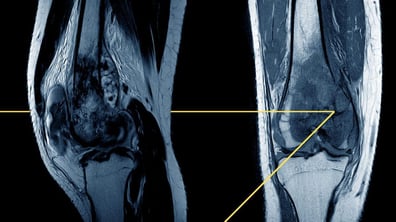The cell and gene therapy field has seen a significant transformation over the last decade
Advances in cell and gene therapies have culminated in the successful clinical translation and marketing approval of several cutting-edge advanced biological therapies that have shaped and are continuing to shape the way some debilitating diseases with unmet medical needs are treated.
With such therapies, a new revolutionary era has already started with the emergence of genome editing as a new potential therapeutic modality for different pathological disorders. This approach has seen the rapid development of various technologies based on first-generation gene editing systems such as zinc finger nucleases (ZFNs), transcription activator-like effector nucleases (TALENs) and clustered regularly interspaced short palindromic repeat-associated Cas9 nuclease (CRISPR/Cas9); as well as second-generation gene editing systems such as base editing, prime editing, and nuclease-free genome editing.
The evolution of genome editing technologies
As part of the first-generation gene editing era, the field has seen the first ex vivo genome editing cell-based products, where ZFNs were used to produce autologous CCR5 gene edited T cells to treat Human Immunodeficiency Virus (HIV); and TALENs were used to generate the first allogeneic Chimeric Antigen Receptor (CAR) T cells for hematological malignancies. In 2018, a new milestone was reached again with the first in vivo genome editing product (a ZFN-mediated adeno-associated virus (AAV)-based product) to be administered to a patient with mucopolysaccharidosis type 1 (MPS I) in the clinical setting. This was later followed in 2021, by the first in vivo CRISPR/Cas9-mediated genome editing product for the treatment of transthyretin amyloidosis.
As the field progresses, the next 2 years are expected to be filled with significant milestones, notably the anticipated marketing approval of the first ex vivo CRISPR/Cas9-based gene editing product for sickle-cell disease; as well as the emergence of new clinical data from the first pivotal phase 2 study using allogeneic TALEN-mediated gene edited CAR-T cells for the treatment of non-Hodgkin lymphoma; and initiation of global pivotal clinical studies involving in vivo CRISPR/Cas9 gene editing products.

Real-world application of genome editing techniques
As first-generation genome editing products mature in the clinic and as more second-generation genome editing products enter first-in-human studies, a shift towards expanding such technologies for in vivo administration and intervening at a much younger age in patients with unmet medical needs, will likely increase. As such, careful considerations from a scientific, technical, clinical and regulatory perspective are warranted, driven by a thorough risk-based science-focused approach. These considerations should factor in not only those general technical expectations that are commonly applicable to viral/non-viral vectors or cell-based products, but also the specific characteristics and risks linked with the type of product being developed.
For instance, for ex vivo genome editing products, one should take into account the number of gene editing events the cells have been subjected to, the conditions under which the editing was conducted notably the cell banking system used to generate the final product; and any additional characterization conducted using latest state-of-the-art unbiased sensitive methods, in order to thoroughly analyze off-target and unwanted on-target gene editing events. Other additional specific safety considerations also apply to in vivo genome editing products notably those intended for systemic administration, to rule out any potential risk of off-target effects or germline modification, as a result of unwanted uptake into non-target tissues (such as germline cells).
Looking ahead
As the field matures, we will continue to collect data to correlate product-specific characteristics with direct clinical outcome for ex vivo gene edited cell-based products. Additionally, we will gain clarity on the long-term clinical significance of the recent in vivo gene editing technologies that have already been used in the clinic. Evidence-based and platform-based understandings will help to continuously improve product-related quality, safety and efficacy attributes that will eventually satisfy the key fundamental rule of regulatory approval based on a positive benefit-to-risk ratio for that target disease population for which the product has been developed.




